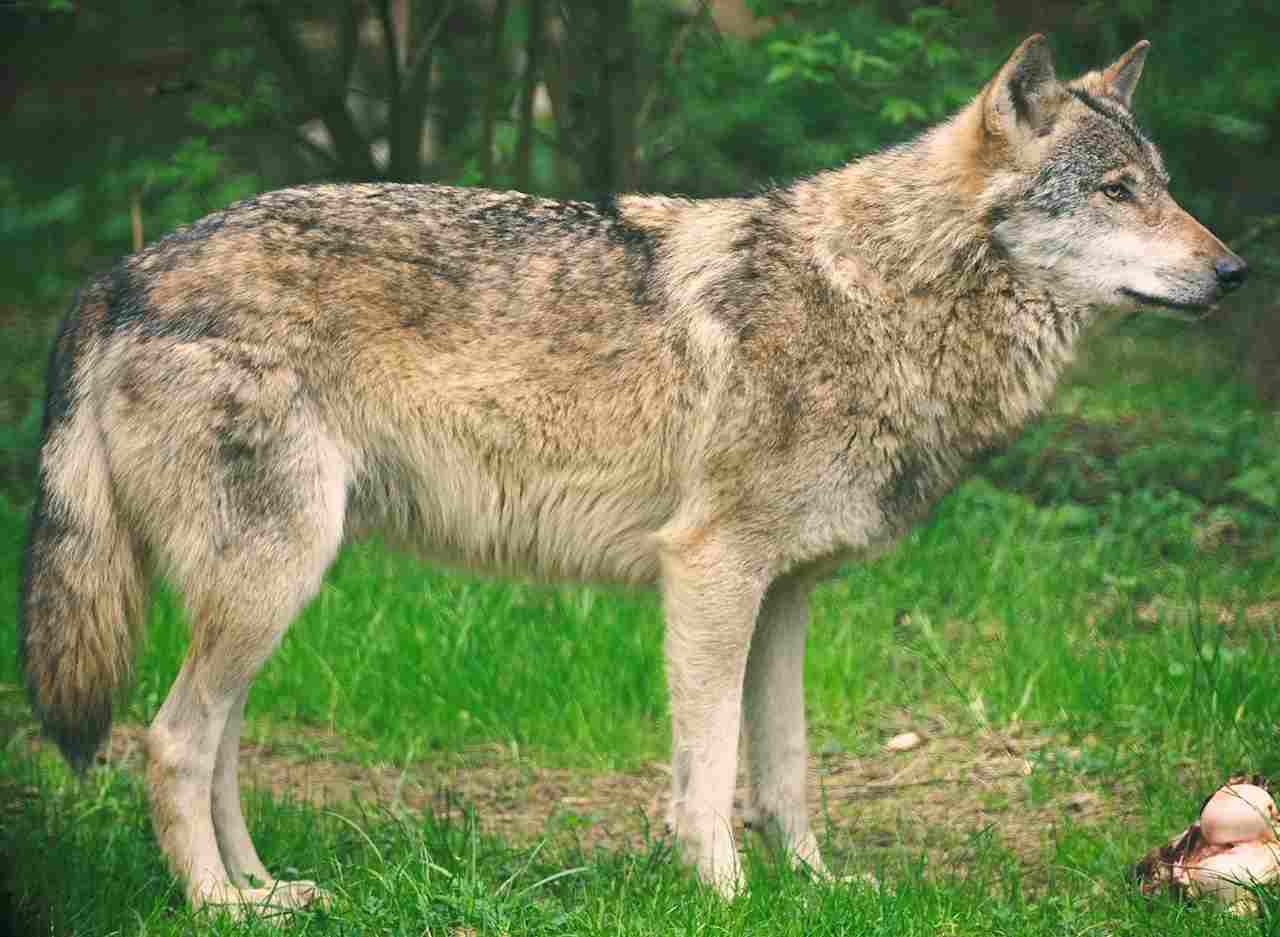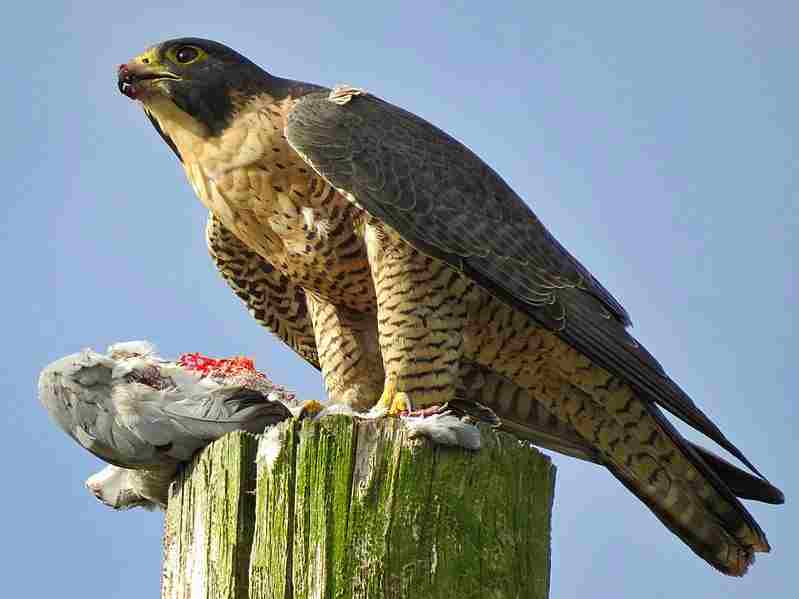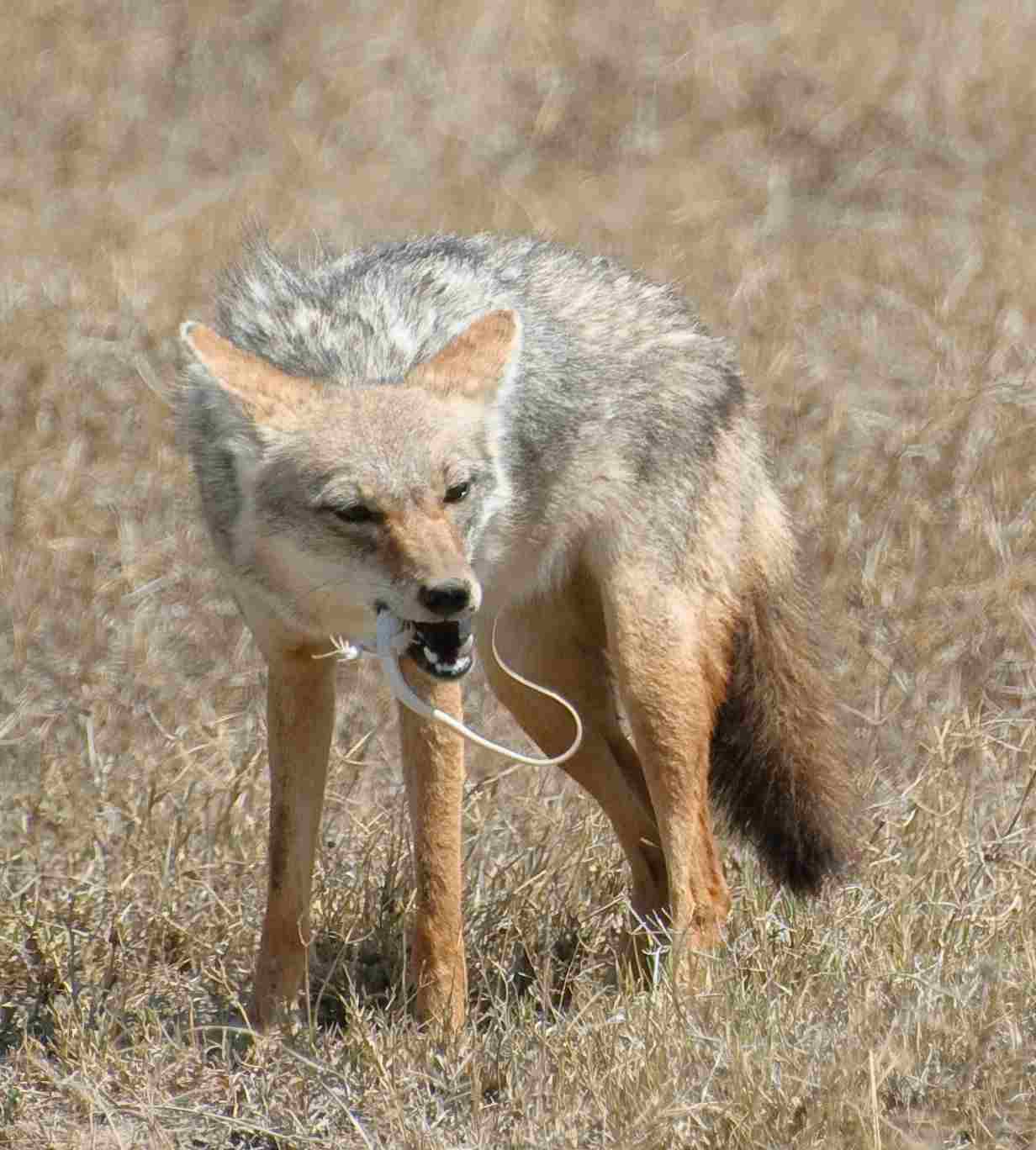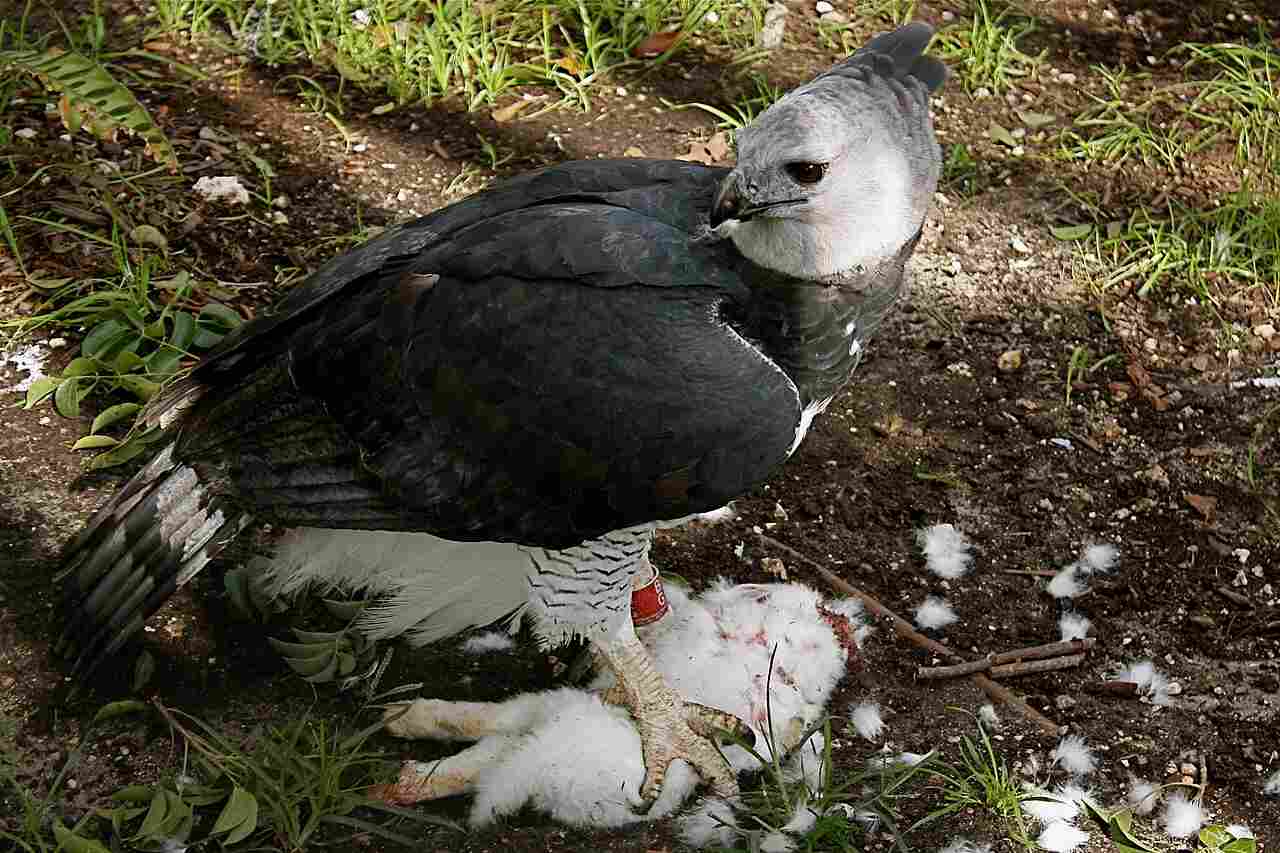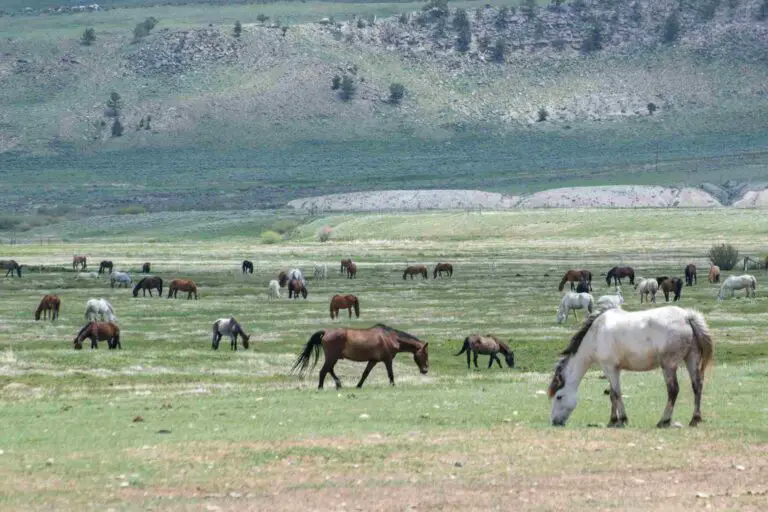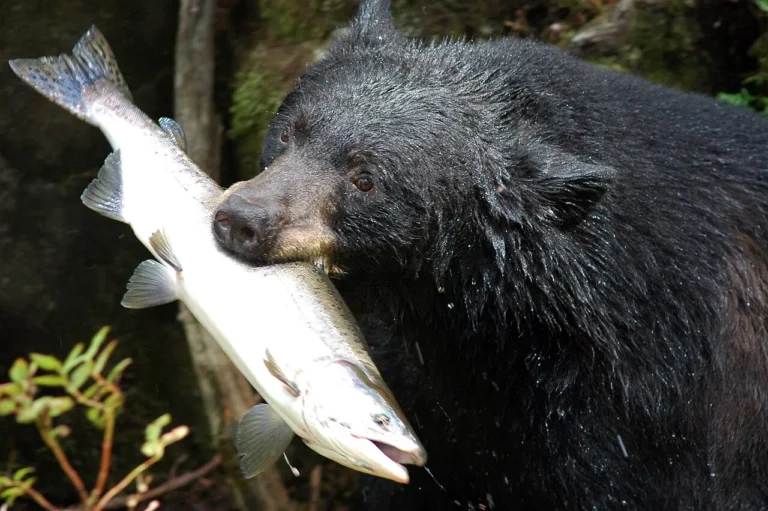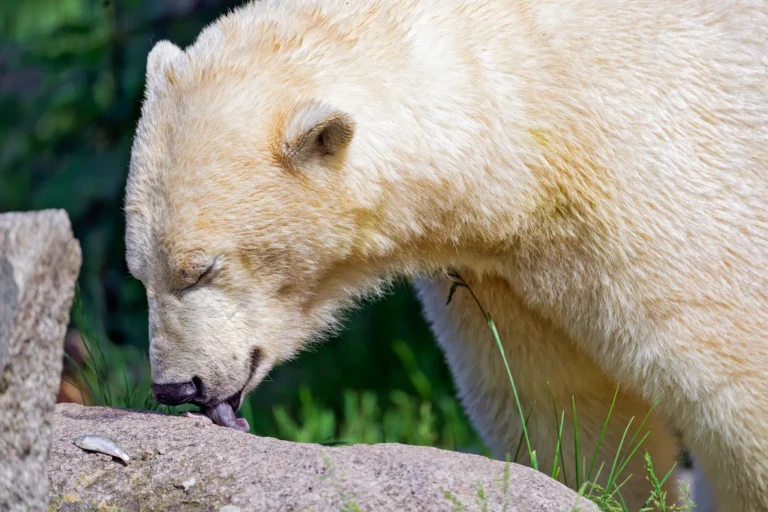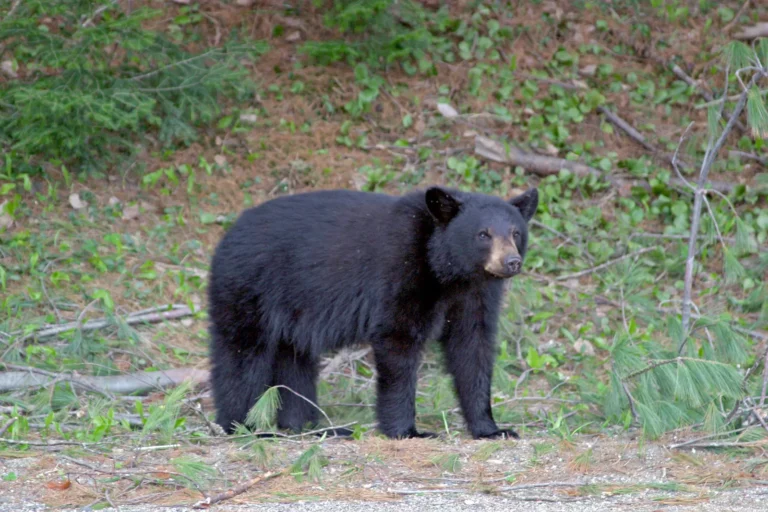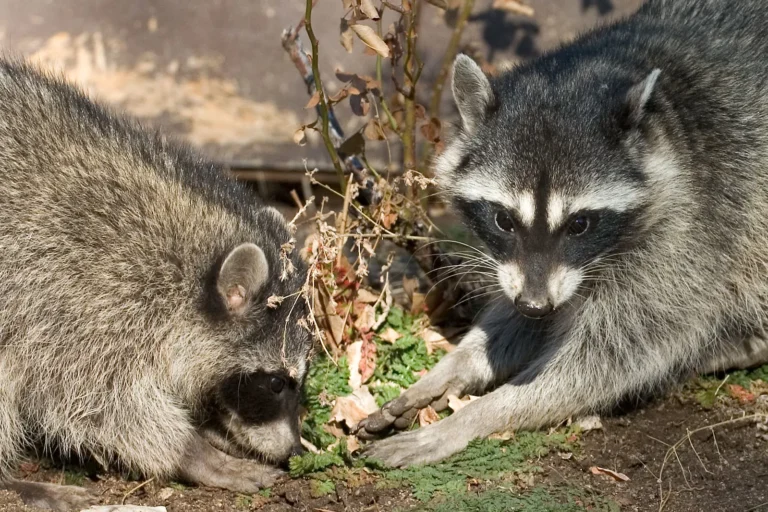What Type of Consumer is a Mountain Lion? Cougar Diet and Trophic Role Explored
A mountain lion is classified as a tertiary consumer, due to its relatively large size and carnivorous feeding habits.
As a tertiary consumer, the mountain lion plays an active role in predation within various ecosystems, such as forests, deserts, prairies, and tundras. Its position in the food chain allows it to feed on secondary consumers, contributing to the trophic cascading effect. With its advanced predatory capabilities, the mountain lion is able to maintain its status as a top predator in its habitat.
Is a Cougar a Consumer?
A cougar is indeed a consumer. Unlike producers, cougars do not manufacture their own food. They also do not feed on organic waste like decomposers.
This implies that cougars rely on consuming other organisms for their energy and nutrients. As a consumer, cougars play a vital role in the ecosystem by contributing to the flow of energy and nutrients through the food chain.
Their predatory nature and feeding habits make them an important part of maintaining the balance within their respective habitats. Cougars are skilled hunters and their ability to consume other organisms is essential for their survival and the overall functioning of the ecosystem.
Reasons Why a Cougar is a Consumer
1. Heterotrophic Mode of Feeding
A key reason why a cougar is classified as a consumer is its heterotrophic mode of feeding. Unlike autotrophs, which can produce their own food through photosynthesis, cougars rely on consuming other organisms for their energy and nutrients. This fundamental characteristic places them in the consumer category within the ecological food chain.
Cougars, also known as mountain lions, are unable to synthesize their own food due to the absence of chlorophyll, leaves, roots, or flagella. Instead, they must obtain their sustenance by preying on other animals. This simple explanation, suitable for an eighth-grade audience, highlights the basic concept that cougars are consumers.
In their natural habitat, cougars exhibit a diverse diet, which includes deer, elk, small mammals, and occasionally livestock. By hunting and consuming these animals, cougars fulfill their energy requirements and obtain essential nutrients. This reliance on external food sources further supports their classification as consumers.
It is important to note that cougars do not possess the characteristics typically associated with producers, such as the ability to convert sunlight into energy or the presence of specialized structures for photosynthesis. Instead, their survival depends on their ability to capture and consume prey, making them an integral part of the ecological food web as consumers.
2. Cougars Lack Typical Features of Producers
Cougars, also known as mountain lions, lack the typical features associated with producers, such as chlorophyll, leaves, roots, and flagella. This absence of essential structures and processes implies that a cougar is a consumer within the ecological food chain.
Unlike plants and other autotrophs that can produce their own food through photosynthesis, cougars rely on consuming other organisms for their energy and nutrients. This fundamental difference in their mode of obtaining sustenance places them firmly in the consumer category.
In simple terms suitable for an eighth-grade audience, cougars cannot make their own food like plants do. Instead, they must hunt and prey on other animals to meet their energy requirements and obtain essential nutrients. This reliance on external food sources further supports their classification as consumers.
The absence of chlorophyll, leaves, roots, and flagella in cougars is a clear indication that they do not possess the characteristics typically associated with producers. These features are essential for autotrophs to convert sunlight into energy and carry out photosynthesis. Cougars, on the other hand, lack these specialized structures and processes, emphasizing their role as consumers in the ecological food web.
By capturing and consuming prey, cougars play a vital role in maintaining the balance of ecosystems. They contribute to the regulation of prey populations and help control the distribution of energy and nutrients throughout the food chain. Without their predatory behavior, the dynamics of the ecosystem would be significantly altered.
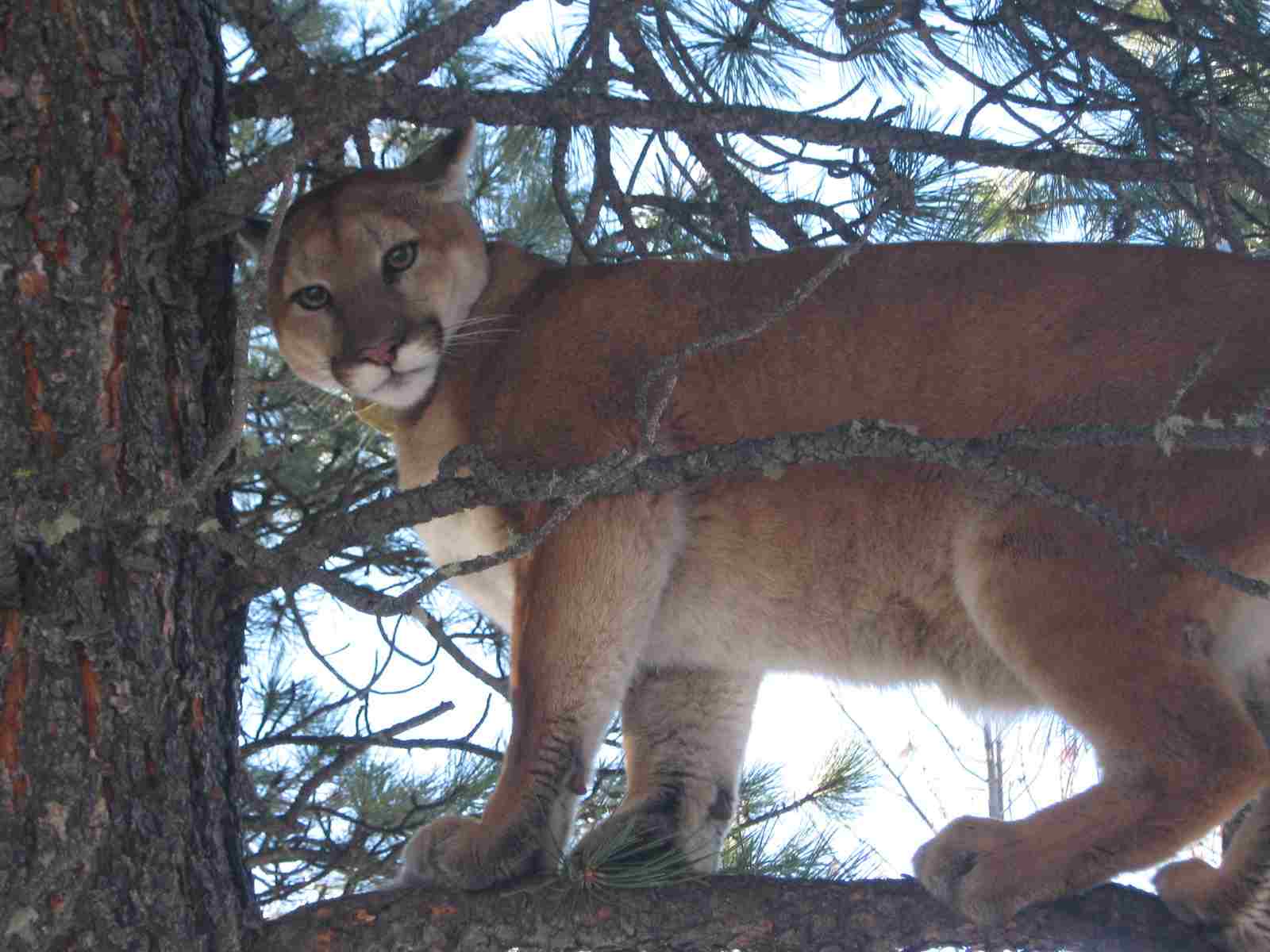
3. Neither Detritivorous Nor Saprophytic
Cougars, also known as mountain lions, are neither detritivorous nor saprophytic. This means that they do not play a role as decomposers in the ecosystem.
Detritivores are organisms that feed on dead organic matter, such as decaying plants and animals. They help break down and recycle nutrients back into the environment. Saprophytes, on the other hand, obtain their nutrients by decomposing dead organic matter. They play a crucial role in the decomposition process.
However, cougars do not participate in these decomposition processes. They do not feed on dead organic matter or rely on decomposing organisms for their nutrition. Instead, cougars are strictly consumers, obtaining their energy and nutrients by hunting and consuming other animals.
This distinction is important because it highlights the specific role that cougars play in the food chain. As consumers, they occupy a higher trophic level and have a direct impact on the populations of their prey species. By preying on other animals, cougars help regulate the population sizes and maintain the balance of the ecosystem.
In summary, cougars are not detritivorous or saprophytic, which means they do not participate in the decomposition processes as decomposers. Instead, they are consumers that rely on hunting and consuming other animals for their energy and nutrients. This unique role as a predator contributes to the overall functioning and equilibrium of the ecosystem.
Is a Mountain Lion a Primary Consumer?
No, a mountain lion is not a primary consumer. Primary consumers are organisms that directly rely on producers for their energy and nutrients. They are typically herbivores that feed on plants and other autotrophic organisms. However, mountain lions, also known as cougars, are carnivorous predators that primarily feed on other animals.
As carnivores, mountain lions occupy a higher trophic level in the food chain than primary consumers. They are secondary consumers, which means they prey on other animals that are lower in the trophic hierarchy. Primary consumers, such as herbivores, feed directly on producers like plants, algae, or other autotrophic organisms.
Mountain lions do not rely directly on producers for their nutrition. Instead, they hunt and consume other animals, which makes them carnivorous predators. Their diet mainly consists of ungulates like deer, but they can also prey on smaller mammals, birds, and occasionally even reptiles or fish.
Being a secondary consumer, mountain lions have a significant impact on the populations of their prey species. They help regulate the population sizes and maintain the balance of the ecosystem by controlling the abundance of their prey. This predatory role is crucial for the overall functioning and equilibrium of the ecosystem.
Is a Mountain Lion a Secondary Consumer?
A mountain lion, also known as a cougar, is not considered a secondary consumer. Secondary consumers typically include smaller and weaker or less-evolved predators like foxes, raccoons, opossums, weasels, badgers, coatis, and even coyotes. These secondary consumers occupy a lower trophic level in the food chain compared to mountain lions.
Mountain lions, on the other hand, occupy a higher trophic level than these secondary consumers. They are larger in size and have a more advanced predatory capability, allowing them to prey on a wider range of animals. As a result, mountain lions have a larger scale of predatory impact compared to secondary consumers.
However, in certain situations where smaller predators are not present, mountain lions may be classified as secondary consumers. This is because they also feed on primary consumers like deer. In such cases, mountain lions play a role in regulating the population sizes of primary consumers and maintaining the balance of the ecosystem.
Mountain lions are known for their ability to hunt and consume a variety of prey species. Their diet mainly consists of ungulates like deer, but they can also prey on smaller mammals, birds, and occasionally even reptiles or fish. This diverse diet allows them to adapt to different environments and maintain their position as top predators in their ecosystems.
The predatory role of mountain lions is crucial for the overall functioning and equilibrium of the ecosystem. By controlling the abundance of their prey, they help regulate the population sizes and prevent overgrazing or overpopulation of certain species. This trophic cascading effect has a significant impact on the structure and dynamics of the ecosystem.
Is a Mountain Lion a Tertiary Consumer?
Yes, typically, a mountain lion is considered a tertiary consumer. This is because mountain lions have the ability to prey on secondary consumers such as raccoons and foxes.
As a tertiary consumer, mountain lions occupy a high trophic level in the food chain. They are at the top of the predator hierarchy and play a crucial role in regulating the populations of both primary and secondary consumers.
Mountain lions are known for their advanced predatory capabilities, which allow them to hunt and consume a wide range of animals. Their diet primarily consists of ungulates like deer, but they can also prey on smaller mammals, birds, and occasionally even reptiles or fish. This diverse diet enables them to adapt to different environments and maintain their position as top predators in their ecosystems.
The relatively large size of mountain lions contributes to their status as tertiary consumers. Their size gives them the strength and agility to take down larger prey, including secondary consumers. This ability to prey on secondary consumers further solidifies their position as tertiary consumers in the food chain.
Another reason why mountain lions are considered tertiary consumers is their role in trophic cascading. Trophic cascading refers to the indirect effects that predators have on lower trophic levels. By controlling the abundance of their prey, mountain lions help regulate the population sizes and prevent overgrazing or overpopulation of certain species. This has a significant impact on the structure and dynamics of the ecosystem.
Therefore, a mountain lion is typically classified as a tertiary consumer. Their ability to prey on secondary consumers, their relatively large size, advanced predatory capabilities, and their role in trophic cascading all contribute to their position as top predators in their ecosystems. By understanding the trophic role of mountain lions, we can gain a deeper appreciation for their importance in maintaining the balance and functioning of the natural world.
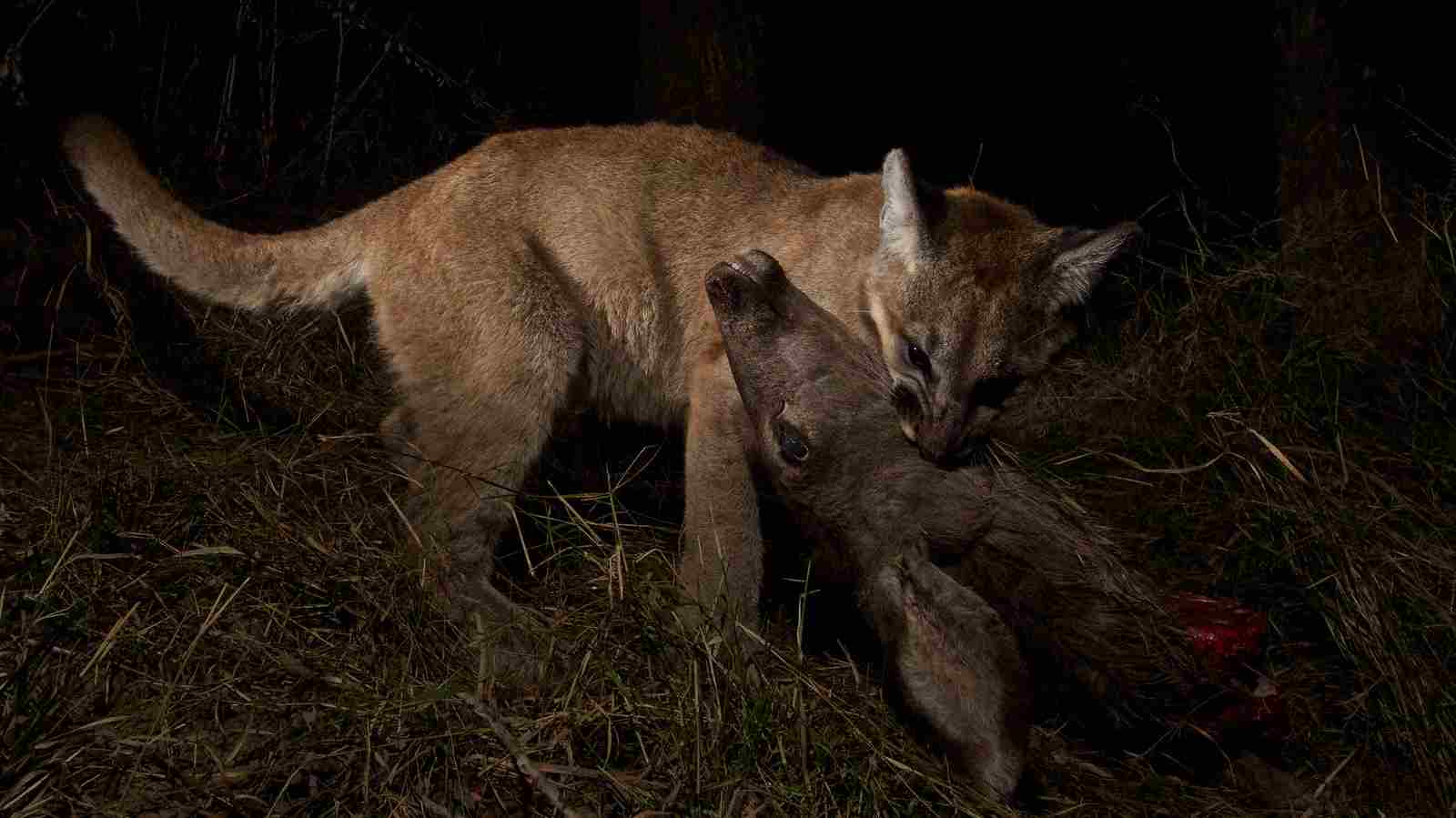
Reasons Why a Mountain Lion is a Tertiary Consumer
1. Relatively Large Size
The relatively large size of the mountain lion sets it apart from other predators in the same ecoregion, such as foxes, weasels, and even other felines like bobcats. This size difference is a key factor in determining the mountain lion’s trophic role as a tertiary consumer.
With its powerful build and muscular frame, the mountain lion is able to take down larger prey compared to its smaller counterparts. This ability to hunt and consume larger animals further solidifies its position as a tertiary consumer in the food chain.
By preying on animals such as deer, elk, and even smaller mammals like raccoons and rabbits, the mountain lion plays a crucial role in regulating the population of these species. Its large size allows it to exert top-down control on the ecosystem, influencing the abundance and distribution of its prey.
In addition to its physical attributes, the mountain lion’s hunting strategies and techniques also contribute to its role as a tertiary consumer. It possesses exceptional stealth and camouflage, allowing it to approach its prey undetected. Its sharp teeth and retractable claws are well-adapted for capturing and subduing its prey, further highlighting its advanced predatory capability.
The mountain lion’s position as a tertiary consumer also has cascading effects on the ecosystem. By controlling the population of herbivores, it indirectly affects the vegetation and plant communities in its habitat. This trophic cascading effect can have far-reaching consequences, influencing the overall structure and dynamics of the ecosystem.
2. Advanced Predatory Capability
The advanced predatory capability of the mountain lion is a key factor in its role as a tertiary consumer. Through its specialized adaptations such as teeth, claws, camouflage, and stealth, the mountain lion is able to effectively hunt and capture its prey.
One of the primary adaptations that contribute to the mountain lion’s predatory capability is its teeth. With sharp, strong canines and molars, the mountain lion is equipped to tear through flesh and crush bones. These teeth are essential for capturing and consuming its prey, allowing the mountain lion to efficiently extract nutrients from its food.
In addition to its teeth, the mountain lion’s retractable claws are another crucial adaptation for hunting. These sharp claws enable the mountain lion to grip and hold onto its prey, providing stability and control during the capture. The retractable nature of the claws also helps to keep them sharp and protected when not in use, ensuring their effectiveness when needed.
Camouflage is yet another adaptation that aids the mountain lion in its predatory endeavors. With its tawny coat and spotted pattern, the mountain lion can blend seamlessly into its surroundings, making it difficult for prey to detect its presence. This camouflage allows the mountain lion to approach its prey undetected, increasing its chances of a successful hunt.
Stealth is a key attribute of the mountain lion’s hunting strategy. It moves silently and with great agility, allowing it to stalk its prey without alerting them to its presence. By minimizing noise and avoiding sudden movements, the mountain lion can get close to its prey before launching a swift and decisive attack.
3. Trophic Cascading Effect
The presence or absence of a mountain lion in an ecosystem can have a disproportionate effect on the organic dynamics of various trophic levels. This phenomenon is known as the trophic cascading effect.
The trophic cascading effect occurs when changes in the abundance or behavior of top predators, such as the mountain lion, indirectly influence the populations of species at lower trophic levels. In the case of the mountain lion, its role as a tertiary consumer means that its predation on secondary consumers can have far-reaching consequences throughout the ecosystem.
One of the key impacts of the trophic cascading effect is on species richness. When the mountain lion is present in an ecosystem, it helps to regulate the populations of its prey species, such as deer and elk. By controlling the abundance of these herbivores, the mountain lion indirectly affects the availability of resources for other species. This can lead to changes in the composition and diversity of the ecosystem, influencing the overall species richness.
Reproduction is another aspect of organic dynamics that can be influenced by the trophic cascading effect. When the mountain lion preys on secondary consumers, it reduces the pressure on vegetation caused by these herbivores. This can result in increased plant productivity, providing more resources for primary consumers, such as rodents and rabbits. As a result, the populations of these primary consumers may increase, leading to higher reproductive rates and potentially affecting the population dynamics of other species in the ecosystem.
Activity patterns of species can also be affected by the trophic cascading effect. When the mountain lion is present, its predatory behavior can create a “landscape of fear” among its prey species. This fear can alter the behavior and movement patterns of these prey species, influencing their foraging activities and habitat selection. These changes in activity patterns can have cascading effects on other species that interact with the prey species, potentially altering their own behavior and distribution within the ecosystem.
4. Predation On Secondary Consumers
The mountain lion is a formidable predator that can feed on a variety of secondary consumers. These secondary consumers include animals such as raccoons, weasels, and even some raptors if caught. This predatory behavior highlights the mountain lion’s role as a tertiary consumer in the ecosystem.
As a tertiary consumer, the mountain lion occupies the top of the food chain and plays a crucial role in regulating the populations of its prey species. By preying on secondary consumers, the mountain lion helps to control their numbers, preventing them from becoming too abundant and potentially causing imbalances in the ecosystem.
The mountain lion’s ability to prey on a diverse range of secondary consumers is a testament to its advanced predatory capability. Its agility, strength, and sharp claws enable it to successfully capture and subdue its prey. This adaptability allows the mountain lion to exploit a variety of food sources, ensuring its survival even in challenging environments.
The predation of the mountain lion on secondary consumers also contributes to the trophic cascading effect. By reducing the populations of these secondary consumers, the mountain lion indirectly affects the populations of primary consumers and the availability of resources for other species. This can have cascading effects throughout the ecosystem, influencing the dynamics and interactions of various organisms.
Is a Cougar a Producer, Consumer, or Decomposer?
A cougar, also known as a mountain lion, is primarily a consumer in the ecosystem. Unlike producers, such as plants and algae, cougars do not possess chlorophyll or any chemosynthetic features that allow them to manufacture their own food through photosynthesis or other means. Instead, cougars rely on consuming other organisms for their energy and nutrients.
As a consumer, cougars play a vital role in the food chain as they feed on other organisms, particularly secondary consumers. They are skilled predators that can capture and prey upon a variety of animals, including raccoons, weasels, and even certain raptors. By consuming these secondary consumers, cougars help regulate their populations and maintain the balance of the ecosystem.
Cougars are not decomposers either. Decomposers, such as bacteria and fungi, contribute directly to the process of biodegradation by breaking down organic matter into simpler compounds. While cougars may indirectly contribute to decomposition by providing carrion for scavengers and decomposers, they do not actively participate in the process themselves.
Generally, a cougar is primarily a consumer in the ecosystem. It obtains its energy and nutrients by consuming other organisms, making it an important part of the food chain. However, it is not a producer as it lacks the ability to manufacture its own food through photosynthesis or chemosynthesis. Additionally, it is not a decomposer as it does not directly contribute to the process of biodegradation.
FAQs
1. Is A Mountain Lion A herbivore?
A mountain lion is not a herbivore. It does not eat plants or other producers. As a carnivore, it primarily consumes meat. Mountain lions are skilled hunters and prey on a variety of animals, including deer, elk, and smaller mammals. They are at the top of the food chain and play an important role in regulating prey populations.
No, a mountain lion is not a herbivore.
Mountain lions are apex predators that rely on a diet of meat to survive. They are well-adapted to hunting and have sharp teeth and powerful jaws to capture and kill their prey. Their diet consists mainly of ungulates, such as deer, but they can also consume smaller mammals when necessary.
2. Is a Cougar a Tertiary Consumer?
Yes, a cougar is considered a tertiary consumer. As an apex predator, it occupies the top level of the food chain and has the ability to feed on both primary and secondary consumers. This means that cougars primarily consume other animals that are lower in the food chain, such as herbivores and smaller carnivores.
They play a crucial role in regulating prey populations and maintaining the balance of ecosystems. Cougars have adapted to be skilled hunters, with sharp teeth and powerful jaws to capture and kill their prey. Their diet mainly consists of ungulates like deer, but they can also consume smaller mammals when necessary. Being a tertiary consumer, cougars have a significant impact on the overall structure and dynamics of the food chain.
3. What Consumer Level is a Cougar?
A cougar is considered to be at the third consumer level in the food chain, also known as the tertiary consumer level. This means that cougars are one step above the secondary consumers and two steps above the primary consumers. As a tertiary consumer, cougars play a crucial role in the ecosystem by regulating the populations of the animals they prey upon.
They are often referred to as third-order consumers because they consume animals that are lower in the food chain. Cougars primarily feed on herbivores and smaller carnivores, making them an important part of the overall structure and dynamics of the food chain. Their position as apex predators allows them to have a significant impact on maintaining the balance of ecosystems.
4. Are Lions Producers or Consumers?
Lions are consumers in the food chain. They do not synthesize their own food or biomass, but instead rely on consuming other organisms for energy. As top predators, lions primarily feed on herbivores such as zebras, wildebeests, and buffalo. They are known for their hunting prowess and ability to take down large prey.
Lions play a crucial role in the ecosystem as consumers. By regulating the populations of herbivores, they help maintain the balance of the food chain. This prevents overgrazing and ensures the survival of plant species. Additionally, lions provide food for scavengers and decomposers when they leave behind carcasses after a kill.
5. What Part of the Food Chain is a Cougar?
A cougar, also known as a mountain lion, occupies the upper part of the food chain as a high-level consumer. As a top predator, cougars play a role in regulating the populations of herbivores in their ecosystem. They primarily feed on animals such as deer, elk, and smaller mammals.
Cougars are considered apex predators, meaning they have no natural predators themselves. This allows them to exert control over the food chain and maintain the balance of the ecosystem. By preying on herbivores, cougars help prevent overgrazing and ensure the survival of plant species. They also provide food for scavengers and decomposers when they leave behind carcasses after a kill.
6. Is a Cougar a Consumer or Producer?
A cougar, also known as a mountain lion, is a consumer in the food chain. As a top predator, cougars rely on consuming other organisms for their energy and nutrients. They do not produce their own food through photosynthesis like plants do. Instead, cougars obtain their energy by hunting and feeding on other animals.
Cougars are considered carnivores, which means they primarily eat the flesh of other animals. Their diet consists mainly of herbivores such as deer and elk. By consuming these herbivores, cougars play a crucial role in regulating the populations of prey species and maintaining the balance of the ecosystem. They help control the number of herbivores, preventing overgrazing and ensuring the survival of plant species.
7. Is a Cougar a Carnivore?
Yes, a cougar is an obligate carnivore, meaning it eats only the flesh of other animals. As a top predator in the food chain, cougars rely on consuming other organisms for their energy and survival. They do not consume plants or produce their own food through photosynthesis.
Cougars primarily feed on herbivores such as deer and elk. Their diet consists solely of the meat of these animals. By consuming herbivores, cougars play a crucial role in maintaining the balance of the ecosystem. They help control the population of prey species, preventing overgrazing and ensuring the survival of plant species.
Being a carnivore, cougars have evolved specialized adaptations to hunt and capture their prey. They have sharp teeth and powerful jaws to tear through flesh, as well as strong muscles and agility to chase and ambush their targets. Cougars are stealthy hunters, relying on their keen senses and camouflage to approach their prey undetected.
8. Is a Mountain Lion a Primary Consumer or Secondary?
A mountain lion is neither a primary consumer nor a secondary consumer. Instead, it is classified as a tertiary consumer. As a top predator in the food chain, mountain lions primarily feed on herbivores such as deer and elk.
They obtain their energy by consuming the flesh of these animals. Mountain lions play a crucial role in maintaining the balance of the ecosystem by controlling the population of prey species. This helps prevent overgrazing and ensures the survival of plant species.
9. Is a Mountain Lion a Tertiary Consumer?
A mountain lion is indeed a tertiary consumer. It is positioned above secondary consumers, such as foxes, in the food chain. As a top predator, mountain lions primarily feed on herbivores like deer and elk.
They obtain nutrition by consuming the flesh of these animals. By controlling the population of prey species, mountain lions play a crucial role in maintaining the balance of the ecosystem. This helps prevent overgrazing and ensures the survival of plant species. So, to answer the question, yes, a mountain lion is a tertiary consumer.
10. What Kind of Consumer is a Mountain Lion?
A mountain lion is a carnivorous and predatory consumer, also known as an apex predator. As a top-level predator in the food chain, it occupies the highest consumer level.
Mountain lions feed largely on herbivores like deer and elk, making them tertiary consumers, unlike smaller predators (secondary consumers) that focus on prey like rodents. By preying on these animals, they help regulate the population of prey species, ensuring the balance of the ecosystem. This control prevents overgrazing and promotes the survival of plant species. So, to answer the question, a mountain lion is a carnivorous and predatory consumer, occupying the highest consumer level in the food chain.
11. What is an Example of a Tertiary Consumer?
An example of a tertiary consumer is the mountain lion. As a top-level predator in the food chain, the mountain lion feeds on herbivores like deer and elk, having a more significant trophic impact than other predators like coyotes and bobcats.
Another example of a tertiary consumer is the wolf, which also preys on herbivores. Additionally, the wolverine can be considered a tertiary consumer as it feeds on smaller predators and scavengers. These examples highlight the importance of tertiary consumers in controlling the population of lower-level consumers and maintaining the overall health of the ecosystem.
12. Is a Mountain Lion a Tertiary Consumer in the Food Chain?
A mountain lion is indeed a tertiary consumer in the food chain. As a top-level predator, it occupies the fourth trophic level. This means that it primarily feeds on secondary consumers, such as herbivores like deer and elk. By consuming these herbivores, the mountain lion plays a crucial role in regulating their population and maintaining the balance of the ecosystem.
Tertiary consumers like the mountain lion have a significant trophic impact, as they control the population of lower-level consumers and help to prevent overgrazing by herbivores. They also contribute to the flow of energy and nutrients through the food chain. Without the presence of tertiary consumers, the ecosystem would be imbalanced, leading to potential negative consequences for other species and the overall health of the environment.
15. Is a Mountain Lion a Carnivore?
A mountain lion is indeed a carnivore, meaning it exclusively consumes meat. As a top predator in its ecosystem, the mountain lion relies on hunting and capturing other animals for its sustenance. This carnivorous diet consists mainly of herbivores like deer and elk, which the mountain lion hunts and kills to meet its nutritional needs.
Being a carnivore, the mountain lion possesses specific adaptations that enable it to effectively capture and consume its prey. These adaptations include sharp claws, powerful jaws, and keen senses, which aid in stalking, ambushing, and subduing its prey.
The mountain lion’s status as a carnivore places it at a higher trophic level in the food chain, as it feeds on secondary consumers. Its role as a top predator is crucial for maintaining the balance of the ecosystem by controlling the population of herbivores and preventing overgrazing.
16. What Eats a Mountain Lion?
Under normal circumstances, no animal eats a mountain lion in nature. It has no natural predators. However, it is important to note that humans do hunt mountain lions. Due to food scarcity and intense competition for prey and territory, a mountain lion can potentially fall prey to grizzly bears or even wolves. While these instances are rare, they highlight the challenges that mountain lions face in their environment.
Human hunting poses a significant threat to mountain lion populations. Despite efforts to regulate hunting and protect these animals, they are still targeted for various reasons, including trophy hunting and perceived threats to livestock. This human-induced pressure further adds to the challenges faced by mountain lions.
Conclusion
* In this article, we have explored various aspects of the mountain lion’s role as a consumer in the food chain. We have learned that mountain lions are carnivores, feeding primarily on other animals. They occupy the tertiary consumer level, meaning they are at the top of the food chain and have no natural predators.
* We have also discussed the challenges faced by mountain lions, including human hunting and competition for prey and territory. Despite their status as top predators, mountain lions can potentially fall prey to grizzly bears or wolves in certain circumstances.
* It is important to note that mountain lions play a crucial role in maintaining the balance of ecosystems. As top predators, they help regulate prey populations and contribute to the overall health and diversity of their habitats.


